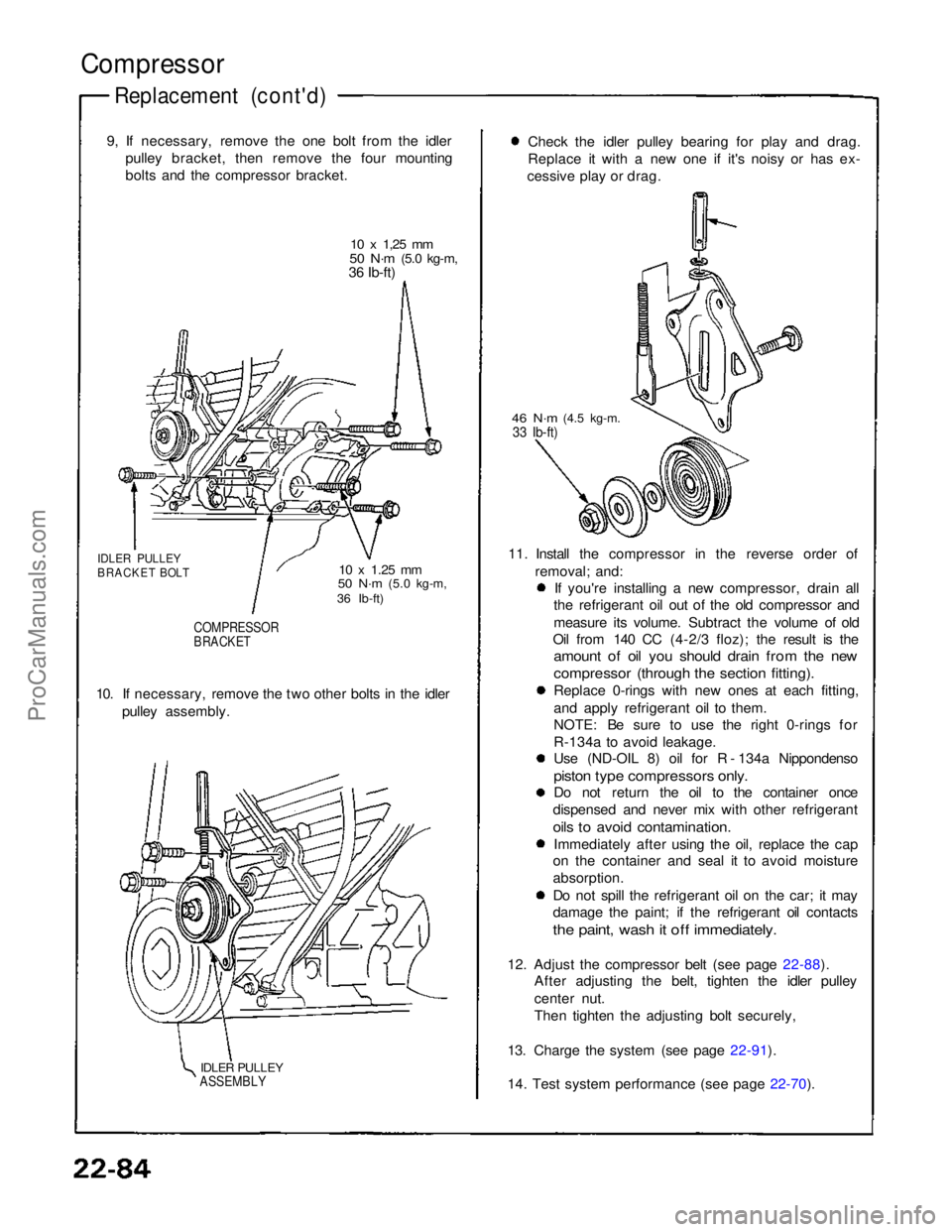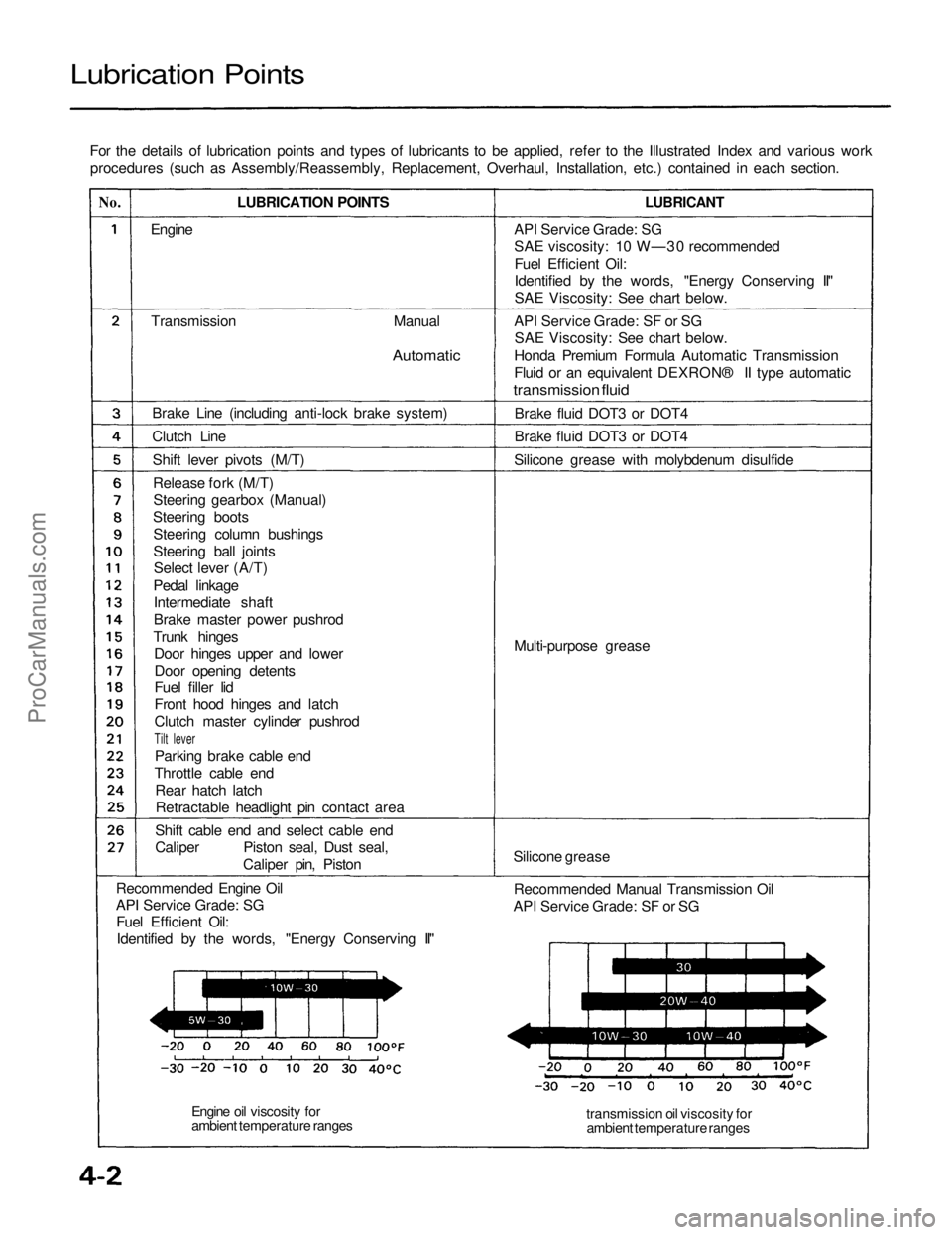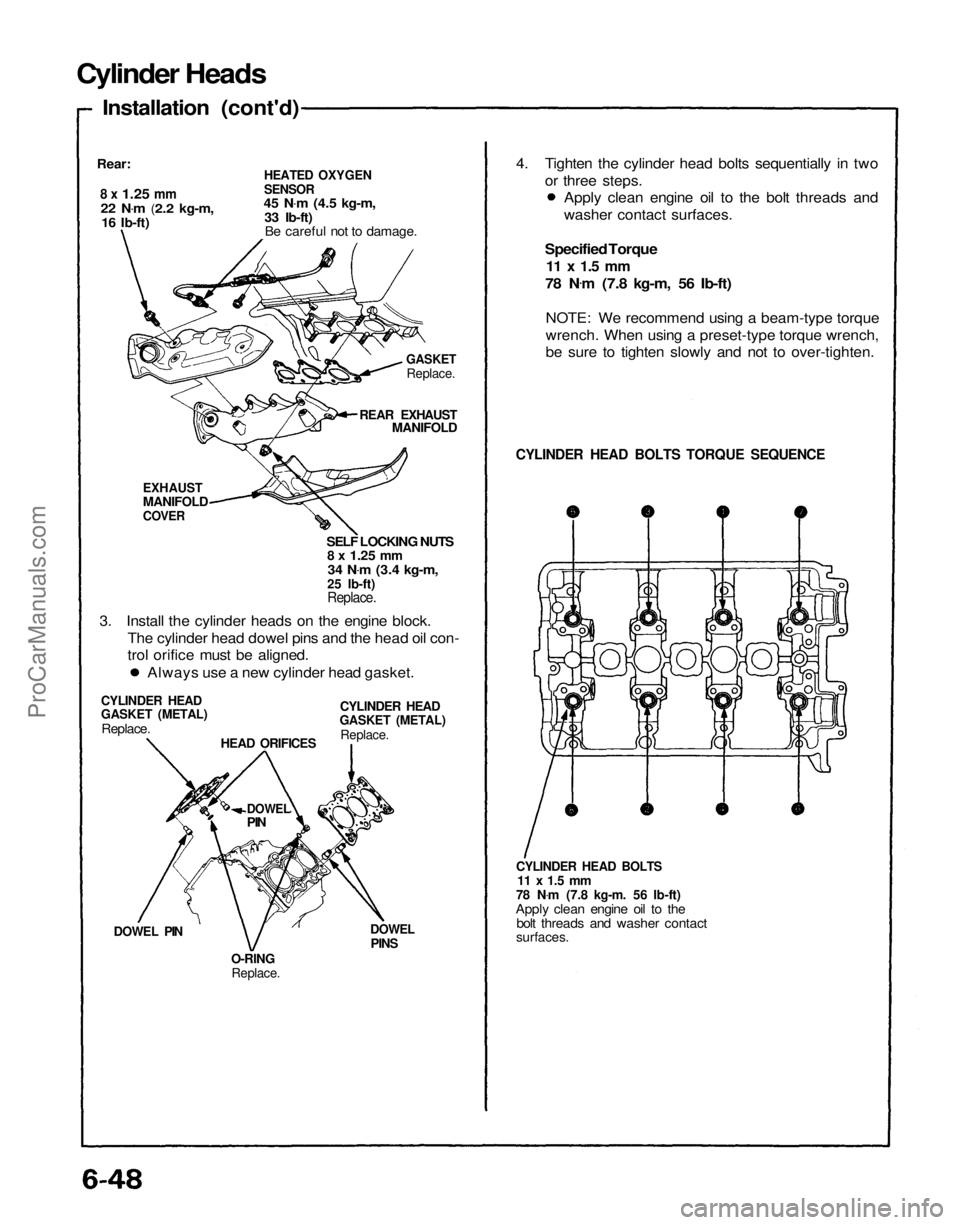Page 27 of 1640
Lubrication Points
For the details of lubrication points and types of lubricants to be applied, refer to the Illustrated Index and various work
procedures (such as Assembly/Reassembly, Replacement, Overhaul, Installation, etc.) contained in each section.
*1: If Honda MTF is not available, you may use an API service SG or SH-rated motor oil with a viscosity of SAE
10 W-30 or 10 W-40 temporarily. Motor oil can cause increased transmission wear and higher shifting effort, so you
should have the transmission drained and refilled with Honda MTF as soon as possible. The transmission should be
drained and refilled with new fluid according to the time and distance recommendations in the maintenance schedule.ProCarManuals.com
Page 520 of 1640
Wheel Sensor
The wheel sensor is a contactless type, and it detects the rotating speeds of a wheel. It is composed of a permanent
magnet and coil. When the gear pulsers attached to the rotating parts of each wheel (rear wheel: outboard joint of the
driveshaft, front: hub bearing unit) turn, the magnetic flux around the coil in the wheel sensor alternates, generating
voltages with frequency in proportion to wheel rotating speed. These pulses are inputted into the ABS control unit, and
the ABS control unit identifies the wheel speeds.ProCarManuals.com
Page 563 of 1640
Types and Materials of Exterior Resin Parts
NOTE: A standard symbol is stamped on the underside of each resin part to show the type of material used.
Example:
HONDA
>PP<
NO.
Part Name
Headlight lid
Front bumper
Front and rear skirts
Mirror
Side sill panel
Trunk ltd spoiler
Rear bumper
Fuel filler lid
Washer Tank
Replacement
see section 23
see page 20-58('93-'96) ,47('91-'92)
see pages 20-59 ('93-'96),48 ('91-'92),
61('93-'96),50('91-'92)
see page 20-20('93-96) ,19('91-'92)
see page 20-71
see page 20-66('93-'96),55('91-'92)
see page 20-60('93-'96),49('91-'92)
see page 20-68('93-'96),57('91-'92)
see page 20-59('93-'96),48('91-'92)
Material
PA6/PPE-M Polyamide/Polyphenylene ether
PBT-P Polybutylene terephthalate
PP Polypropylene
ABS Acrylonitrite butadiene styrene
PA6/PPE-M Polyamide/Polyphenylene ether
UP-G Polyster unsaturated thermoset
PBT-P Polybutylene terephthalate
PA6/PP-E Polyamide/Polyphenylene ether
PP PolypropyleneProCarManuals.com
Page 716 of 1640
Compressor
Description
This compressor is a Nippondenso piston type for R-134a. A revolving inclined disc drives the surrounding 10
reciprocating pistons. As the inclined disc revolved, it pushes the pistons, protected by a ceramic shoe, thus compress-
ing the refrigerant.
RELIFE VALVE
PISTONS
FIELD COILProCarManuals.com
Page 719 of 1640

Compressor
Replacement (cont'd)
9, If necessary, remove the one bolt from the idler pulley bracket, then remove the four mounting
bolts and the compressor bracket.
10 x
1,25
mm
50 N·m
(5.0 kg-m,
36 Ib-ft)
IDLER PULLEY
BRACKET BOLT
COMPRESSOR
BRACKET
10 x
1.25
mm
50 N·m
(5.0 kg-m,
36 Ib-ft)
10. If necessary, remove the two other bolts in the idler pulley assembly.
IDLER PULLEY
ASSEMBLY
Check the idler pulley bearing for play and drag.
Replace it with a new one if it's noisy or has ex-
cessive play or drag.
46 N·m
(4.5 kg-m.
33 Ib-ft)
11. Install the compressor in the reverse order of removal; and:If you're installing a new compressor, drain all
the refrigerant oil out of the old compressor and
measure its volume. Subtract the volume of old
Oil from 140 CC (4-2/3 floz); the result is the
amount of oil you should drain from the new
compressor (through the section fitting).
Replace 0-rings with new ones at each fitting,
and apply refrigerant oil to them.
NOTE: Be sure to use the right 0-rings for
R-134a to avoid leakage.
Use (ND-OIL 8) oil for R - 134a Nippondenso
piston type compressors only.
Do not return the oil to the container once
dispensed and never mix with other refrigerant
oils to avoid contamination.
Immediately after using the oil, replace the cap
on the container and seal it to avoid moisture
absorption. Do not spill the refrigerant oil on the car; it may
damage the paint; if the refrigerant oil contacts
the paint, wash it off immediately.
12. Adjust the compressor belt (see page 22-88). After adjusting the belt, tighten the idler pulley
center nut.
Then tighten the adjusting bolt securely,
13. Charge the system (see page 22-91).
14. Test system performance (see page 22-70).
ProCarManuals.com
Page 973 of 1640

Lubrication Points
For the details of lubrication points and types of lubricants to be applied, refer to the Illustrated Index and various workprocedures (such as Assembly/Reassembly, Replacement, Overhaul, Installation, etc.) contained in each section.
No.
LUBRICATION POINTS
LUBRICANT
Engine
Transmission
Manual
Automatic
Brake Line (including anti-lock brake system)
Clutch Line Shift lever pivots (M/T)Release fork (M/T)Steering gearbox (Manual)
Steering boots Steering column bushings
Steering ball jointsSelect lever (A/T)
Pedal linkage Intermediate shaft
Brake master power pushrod
Trunk hinges Door hinges upper and lower
Door opening detents
Fuel filler lid
Front hood hinges and latch
Clutch master cylinder pushrod
Tilt lever
Parking brake cable end
Throttle cable end Rear hatch latchRetractable headlight pin contact area
Shift cable end and select cable end
Caliper Piston seal, Dust seal, Caliper pin, Piston
Recommended Engine Oil
API Service Grade: SG Fuel Efficient Oil:
Identified by the words, "Energy Conserving II" API Service Grade: SG
SAE viscosity: 10 W—30 recommended
Fuel Efficient Oil:
Identified by the words, "Energy Conserving II"
SAE Viscosity: See chart below.
API Service Grade: SF or SG SAE Viscosity: See chart below.
Honda Premium Formula Automatic Transmission
Fluid or an equivalent DEXRON® II type automatic
transmission fluid
Brake fluid DOT3 or DOT4
Brake fluid DOT3 or DOT4
Silicone grease with molybdenum disulfide
Multi-purpose grease
Silicone grease Recommended Manual Transmission Oil
API Service Grade: SF or SG
transmission oil viscosity forambient temperature ranges
Engine oil viscosity for
ambient temperature rangesProCarManuals.com
Page 1036 of 1640

Cylinder Heads
Installation (cont'd)
Rear:
8 x
1.25
mm
22 N .
m
(2.2 kg-m,
16 Ib-ft)
HEATED OXYGEN
SENSOR
45 N .
m
(4.5 kg-m,
33 Ib-ft) Be careful not to damage.
GASKET
Replace.
REAR EXHAUST
MANIFOLD
EXHAUST
MANIFOLD
COVER
SELF LOCKING NUTS
8 x
1.25
mm
34 N .
m
(3.4 kg-m,
25 Ib-ft)
Replace.
3. Install the cylinder heads on the engine block. The cylinder head dowel pins and the head oil con-
trol orifice must be aligned.
CYLINDER HEAD
GASKET (METAL)
Replace.
CYLINDER HEAD
GASKET (METAL)
Replace.
HEAD ORIFICES
DOWEL
PIN
DOWEL PIN
O-RING
Replace.
DOWEL
PINS
CYLINDER HEAD BOLTS
11 x 1.5 mm
78 N .
m (7.8 kg-m. 56 Ib-ft)
Apply clean engine oil to the bolt threads and washer contact
surfaces.
CYLINDER HEAD BOLTS TORQUE SEQUENCE
Specified Torque
11 x 1.5 mm
78 N .
m (7.8 kg-m, 56 Ib-ft)
NOTE: We recommend using a beam-type torque
wrench. When using a preset-type torque wrench,
be sure to tighten slowly and not to over-tighten.
Always use a new cylinder head gasket. Apply clean engine oil to the bolt threads and
washer contact surfaces.
4. Tighten the cylinder head bolts sequentially in two
or three steps.ProCarManuals.com
Page 1184 of 1640
Oil Pump
The external tooth gear type oil pump consists of a housing together with the main valve body, a pump drive gear, a
pump driven gear, and a pump shaft. The oil pump is installed on the torque converter housing. The pump's driving force
is transmitted by the torque converter pump (directly connected to the engine) to the pump shaft. The gears are provided
in the housing. The intake and exhaust lines and the torque converter line are provided in the housing.
One way Relief Valve
The one-way relief valve is used at times of high speed or high temperature to send relief oil to the oil cooler so that
cooling of ATF will be effective.
(cont'd)ProCarManuals.com